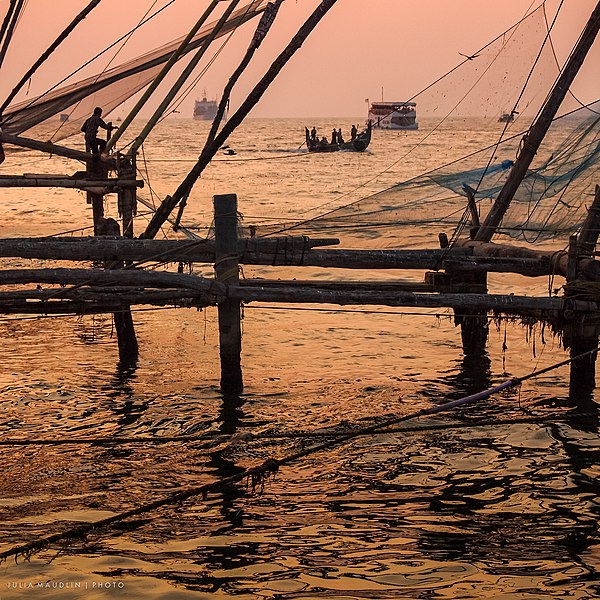In environmental science, a population "overshoots" its local carrying capacity — the capacity of the biome to feed and sustain that population — when that population has not only begun to outstrip its food supply in excess of regeneration, but actually shot past that point, setting up a potentially catastrophic crash of that feeder population once its food populations have been consumed completely. Overshoot can apply to human overpopulation as well as other animal populations: any life-form that consumes others to sustain itself.
Greater Los Angeles lies on a coastal mediterranean savannah with a small watershed that is able to support at most one million people on its own water; as of 2015, the area has a population of over 18 million. Researchers predict that similar cases of resource scarcity will grow more common as the world population increases.
Illegal slash-and-burn agriculture in Madagascar, 2010
A government sign in China: "For a prosperous, powerful nation and a happy family, please practice family planning."
The carrying capacity of an environment is the maximum population size of a biological species that can be sustained by that specific environment, given the food, habitat, water, and other resources available. The carrying capacity is defined as the environment's maximal load, which in population ecology corresponds to the population equilibrium, when the number of deaths in a population equals the number of births. The effect of carrying capacity on population dynamics is modelled with a logistic function. Carrying capacity is applied to the maximum population an environment can support in ecology, agriculture and fisheries. The term carrying capacity has been applied to a few different processes in the past before finally being applied to population limits in the 1950s. The notion of carrying capacity for humans is covered by the notion of sustainable population.
Summering of milk cows in the Swiss Alps in Valais Canton
A fishery at sunset in Cochin, Kerala, India





